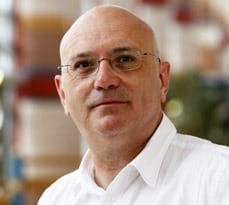A study at Cambridge Judge Business School examines how Black and Minority Ethnic (BME) housing associations in England developed and evolved since the 1948 ‘Windrush generation’.

There have been many academic studies on the persistence of racial inequality, resistance to the Civil Rights Movement, and the roots of minority enterprise – and how individuals have responded to these issues and challenges.
A new study from the Centre for Social Innovation at Cambridge Judge Business School focuses instead on a largely neglected topic: racialised interactions at an organisational – rather than individual – level.
The study, just published in the Journal of Management History, explores the history of Black and Minority Ethnic (BME) housing associations in England. It explains how these marginalised groups created “agency” – increasing their ability to effect meaningful change.
“Through collaboration, BME associations exerted influence on the housing field, seizing opportunities at a local and national level to force the state to take race and housing issues seriously,” says the study.
The study traces the institutional work by Commonwealth and British citizens with regard to Housing Associations between 1948 and 2018 – the seven decades since the arrival in Britain of the “Windrush generation”, named after the Empire Windrush ship that carried hundreds of people to Britain from the Caribbean in June 1948.
Those migrants faced exclusion, racial discrimination and white resistance to their presence in communities. The study outlines how they “developed common ground, organised, and garnered significant collaborative agency” in developing BME housing associations.
The associations accomplished this through five distinct phases of institutional work:
- Maintaining familiar institutions so migrants could meet, play and worship together (1948-1958).
- Disrupting racialised practice in housing through housing cooperatives and associations, and the development of a black political identity (1958-1980).
- Creating institutions, including new BME housing associations with national influence (1980-1992).
- Maintaining institutional gains as the housing market shifted toward fewer, larger and more commercial housing associations (1992-2008).
- Recreating institutions by creating a membership body (BMENational), and through managed mergers with mainstream housing associations (2008-2018).
During this process, the more radical associations needed to compromise their political edge to achieve short-term gains. But in the long term it appears that this has not always been beneficial, and more recently we are seeing the re-emergence of more radical groups.

The study – entitled “Challenging racialised institutions: a history of BME housing associations in England between 1948 and 2018” – is co-authored by Dr Neil Stott, Co-director of the Centre for Social Innovation and Faculty (Reader level) in Management Practice at Cambridge Judge, and Michelle Darlington, Head of Knowledge Transfer at the Centre for Social Innovation.
Neil and Michelle outline some other findings and implications of the study:
Michelle Darlington: “One theme that runs throughout the study is that there’s a tension, particularly at the early stages, between working within and disrupting existing institutions. Initially, the disruption was done by small grassroots organisations. They established collective agency that helped create new institutions.”
Neil Stott: “These more ‘legitimised’ associations were able to resist institutional control and provide homes to vulnerable people, and this meant compromising some of their more radical or controversial agendas such as protests against police profiling in order to secure state resources. As we say in the study, they faced a ‘paradox of how to be both radical and accepted.’”
Michelle Darlington: “Interestingly, as the housing association model has recently become more professional and driven by financial performance, some more radical voices are now reappearing in order to be heard. As the Chair of the membership body BMENational put it earlier this year, associations have to ‘fight for their life’ in the face of consolidation through mergers.
Neil Stott: The study aims to address the fact that racialised groups, such as BME housing associations, have been largely invisible in the organisational literature. We encourage more extensive empirical research on forgotten activism to overcome the daily grind of racism, including the history of individual associations and their communities, as this could shed much-needed light into the activities of marginalised groups that create and maintain institutions that foster greater opportunity.”

